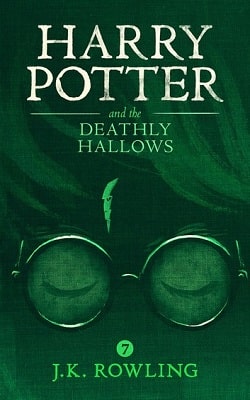‘Let us see,’ said the doctor and peeled back the dressing. The wound was clean, bruised round the edges but closed by six stitches and uninfected. He tutted his satisfaction and redressed the suture.
‘You will be walking in a week,’ said Dr Ayman al-Zawahiri. Then he and Osama bin Laden left the ward. No one took any notice of the sweat-stained Muj squatting in the corner with his head on his knees as if asleep.
Martin rose and crossed to the youth on the bed.
‘I must go,’ he said. ‘The Arabs will look after you. I will seek to find your father and ask for a fresh guide. Go with Allah, my friend.’
‘Be careful, Ma-ick,’ said the boy. ‘These Arabs are not like us. You are kafir, unbeliever. They are like the imam in my madrassah. They hate all infidel.’
‘Then I would be grateful if you would not tell them who I am,’ said the Englishman.
Izmat Khan closed his eyes. He would die under torment rather than betray his new friend. It was the code. When he opened his eyes the Angleez was gone. He heard later the man had reached Shah Massoud in the Panjshir, but he never saw him again.
After his six months behind the Soviet lines in Afghanistan Mike Martin made it home via Pakistan unspotted and with fluent Pashto added to his armoury. He was sent on leave, remustered into the army and, being still in service with the SAS, was posted to Northern Ireland again in autumn 1988. But this time it was different.
The SAS were the men who really terrified the IRA and to kill – or better still capture alive, torture and kill – what they called a Sassman was the IRA’s greatest dream. Mike Martin found himself working with the 14th Intelligence Company, known as ‘the Detachment’ or ‘the Det’.
These were the watchers, the trackers, the eavesdroppers. Their job was to be so stealthy as never to be seen, but to find out where the IRA killers would strike next. To do this they performed some remarkable feats.
IRA leaders’ houses were penetrated via the roof tiles and bugged from the attic downwards. Bugs were placed in dead IRA men’s coffins for it was the habit of the godfathers to hold conferences while pretending to pay their respects to the casket. Long-range cameras caught images of moving mouths and lip-readers deciphered the words. Rifle-mikes recorded conversations through closed windows. When the Det had a real gem, they passed it to the hard men.
The rules of engagement were strict. The IRA men had to fire first and they had to fire at the SAS. If they threw down their guns at the challenge, they had to be taken prisoner. Before firing, both the SAS and Paras had to be immensely careful. It is a recent tradition of British politicians and lawyers that Britain’s enemies have civil rights but her soldiers do not.
Notwithstanding, in the eighteen months Martin spent as an SAS captain in Ulster he participated in the dark-of-night ambushes. In each a party of armed IRA men was caught by surprise and challenged. Each time they were foolish enough to draw and point weapons. Each time it was the Royal Ulster Constabulary who found the bodies in the morning.
But it was in the second shootout that Martin took his bullet. He was lucky. It was a flesh wound in the left bicep but enough to see him flown home and sent for convalescence at Headley Court, Leatherhead. That was where he met the nurse, Lucinda, who was to become his wife after a brief courtship.
Reverting to the Paras in the spring of 1990 Mike Martin was posted to the Ministry of Defence in Whitehall, London. Having set up home in a rented cottage near Chobham so that Lucinda could continue her career, Martin found himself for the first time a commuter in a dark suit on the morning train to London. He ranked as a Staff Officer Three and worked in the office of MOSP, the Military Operations, Special Projects Unit. Once again it was to be a foreign aggressor who would get him out of there.
On 2 August that year Saddam Hussein of Iraq invaded neighbouring Kuwait. Once again Margaret Thatcher would have none of it and US President George Bush, senior, concurred. Within a week plans were in furious preparation to create a multi-national coalition to counter-invade and free the oil-rich mini-state.
Even though the MOSP office was at full stretch the reach and influence of the Secret Intelligence Service was enough to trace him and ‘suggest’ he join a few of the ‘friends’ for lunch.
Lunch was in a discreet club in St James’s and his hosts were two senior men from the Firm. Also at the table was a Jordanian-born, British-naturalized analyst brought in from GCQH at Cheltenham. His job there was to listen to and analyse eavesdropped radio chatter inside the Arab world. But his role at the lunch table was different.
He conversed with Mike Martin in rapid Arabic and Martin replied. Finally the analyst nodded at the two spooks from Century House.
‘I’ve never heard anything like it,’ he remarked. ‘With that face and voice, he can pass.’
With that he left the table, clearly having performed his function.
‘We would be so damnably grateful,’ said the senior mandarin, ‘if you would go into Kuwait and see what is going on there.’
‘What about the army?’ asked Martin.
‘I think they will see our point of view,’ murmured the other.
The army grumbled again but let him go. Weeks later, passing himself off as a Bedouin camel drover, Martin slipped over the Saudi border into Iraqi-occupied Kuwait. On the plod north to Kuwait City he passed several Iraqi patrols but they took no notice of the bearded nomad leading two camels to market. The Bedouin are so determinedly non-political that they have for millennia watched the invaders sweep hither and thither through Arabia and never intervened. So the invaders have mostly let them be.
In several weeks inside Kuwait Martin contacted and assisted the fledgling Kuwaiti resistance, taught them the tricks of the trade, plotted the Iraqi positions, strong points and weaknesses, and then came out again.
His second incursion during the Gulf War was into Iraq itself. He went over the Saudi border in the west and simply caught an Iraqi bus heading for Baghdad. His cover was a simple peasant clutching a wicker basket of hens.
Back in a city he knew intimately well, he took a position as a gardener in a wealthy villa, living in a shack at the end of the garden. His mission was to act as message collector and on-passer; for this he had a small, foldable, parabolic dish aerial whose ‘blitz’ messages were uninterceptable by the Iraqi secret police but which could reach Riyadh.
One of the best-kept secrets of that war was that the Firm had a source, an ‘asset’ high in Saddam’s government. Martin never met him; he just picked up the messages at pre-agreed dead-letter boxes, or ‘drops’, and sent them to Saudi Arabia where the American-led Coalition HQ was both mystified and appreciative. Saddam capitulated on 26 February 1991, and Mike Martin came out, only to be very nearly shot by the French Foreign Legion as he came through the border in the dark.
On the morning of 15 February 1989 General Boris Gromov, commander of the Soviet 40th Army, the army of occupation of Afghanistan, walked alone back across the Friendship Bridge over the Amu Darya river into Soviet Uzbekistan. His entire army had preceded him. The war was over.















